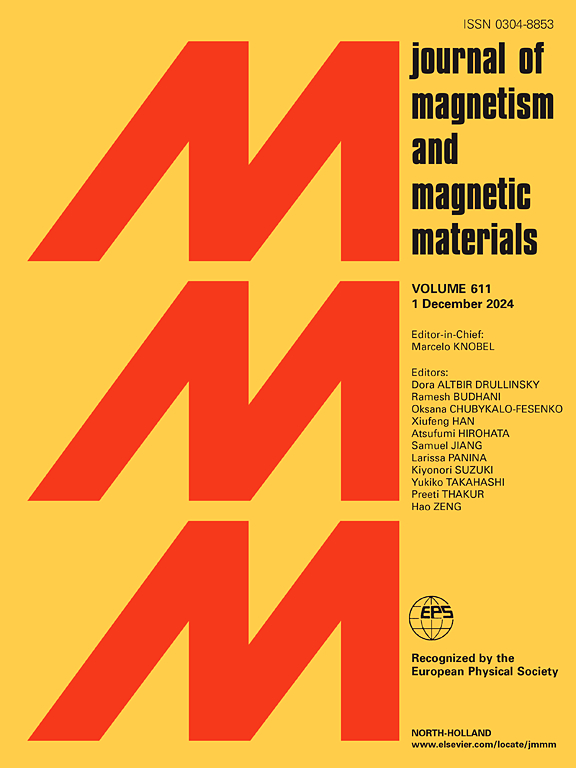Enhancing the magnetic properties of Pr2Fe14B/α-Fe melt-spun ribbons by long-term natural air ageing
IF 2.5
3区 材料科学
Q3 MATERIALS SCIENCE, MULTIDISCIPLINARY
引用次数: 0
Abstract
Nanocomposite Pr9.5Fe84-xB6.5Tix (x = 1, 2, 3, 4) permanent magnetic alloys were fabricated by the melt spinning technique at a wheel speed of 21 ms−1. The magnetic properties, microstructure, and coercivity mechanism were studied before and after three years of aging in air at room temperature. XRD analysis indicated that the as-spun ribbon contains α-Fe soft, Pr2Fe14B hard phase, an amorphous phase, and the aging process enhances the crystalline peaks of α-Fe and Pr2Fe14B phases. The peaks shifting of XRD to lower angles in the aged sample evidence the lattice constant expansion and the stress relaxation. The relaxation in stress induced crystallinity in the aged sample. TEM results showed that the grain size increased in the aged samples, while amorphous content reduced. DSC analysis revealed exothermic peaks near 200 °C for the fresh samples which indicates transformation of amorphous into 2:14:1 and α-Fe while aged samples does not show any heat changes up to 200 °C. The long-term air aging process has a significant effect on the magnetic properties, which increase the value of (BH)max by 184 % increment in the ribbon with x = 4. Initial curves revealed that the coercivity mechanism of the ribbons varies with the content of Ti and aging. The coercivity mechanism with x = 1,2,3 was mainly controlled by the mixture of nucleation of domain and pinning of domain wall movement in both aged and fresh ribbons. In the x = 4 ribbon, the freshly spun sample showed a mixture of nucleation and pinning, while aged samples exhibited a dominant pinning mechanism.
求助全文
约1分钟内获得全文
求助全文
来源期刊

Journal of Magnetism and Magnetic Materials
物理-材料科学:综合
CiteScore
5.30
自引率
11.10%
发文量
1149
审稿时长
59 days
期刊介绍:
The Journal of Magnetism and Magnetic Materials provides an important forum for the disclosure and discussion of original contributions covering the whole spectrum of topics, from basic magnetism to the technology and applications of magnetic materials. The journal encourages greater interaction between the basic and applied sub-disciplines of magnetism with comprehensive review articles, in addition to full-length contributions. In addition, other categories of contributions are welcome, including Critical Focused issues, Current Perspectives and Outreach to the General Public.
Main Categories:
Full-length articles:
Technically original research documents that report results of value to the communities that comprise the journal audience. The link between chemical, structural and microstructural properties on the one hand and magnetic properties on the other hand are encouraged.
In addition to general topics covering all areas of magnetism and magnetic materials, the full-length articles also include three sub-sections, focusing on Nanomagnetism, Spintronics and Applications.
The sub-section on Nanomagnetism contains articles on magnetic nanoparticles, nanowires, thin films, 2D materials and other nanoscale magnetic materials and their applications.
The sub-section on Spintronics contains articles on magnetoresistance, magnetoimpedance, magneto-optical phenomena, Micro-Electro-Mechanical Systems (MEMS), and other topics related to spin current control and magneto-transport phenomena. The sub-section on Applications display papers that focus on applications of magnetic materials. The applications need to show a connection to magnetism.
Review articles:
Review articles organize, clarify, and summarize existing major works in the areas covered by the Journal and provide comprehensive citations to the full spectrum of relevant literature.
 求助内容:
求助内容: 应助结果提醒方式:
应助结果提醒方式:


